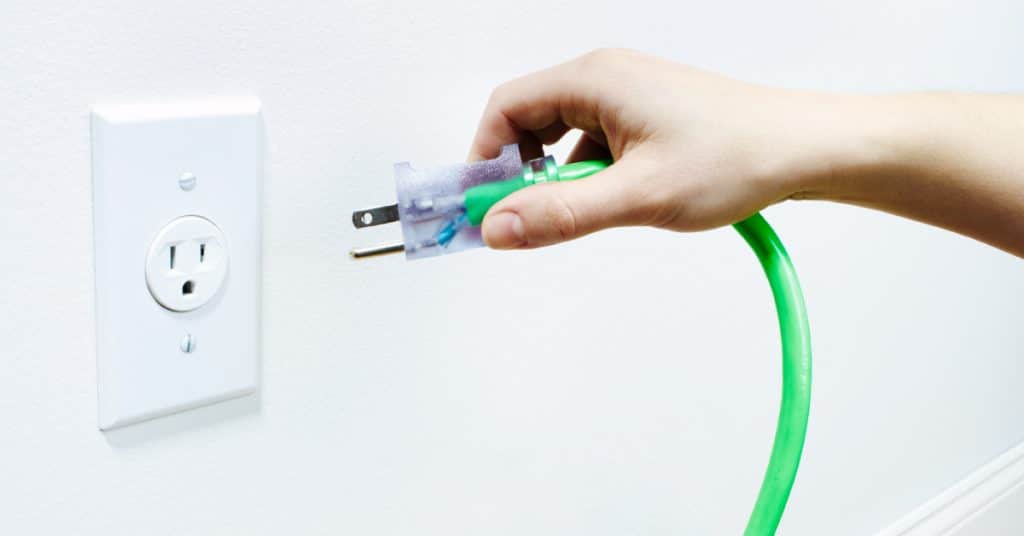
All homeowners have the unavoidable task of regular home repairs and upkeep. This includes electrical outlets that are not working. Your electrical outlets can stop working for a variety of reasons.
Do not assume the worst just yet. Before you run to your circuit breaker, take the time to check on your other outlets. Are some appliances or lights affected? Check them for power by turning them on and off. If you aren’t successful, unplug your appliances or lamps from the dead outlet, just to be sure that the device is not causing overloading or a short circuit. Mark all the outlets that you are having an issue with. Use masking tape so that you can easily remember the problem outlets.
Some possible reasons why your electrical outlet is not working.
Your circuit breaker tripped
An overloaded circuit breaker will shut off to do some damage control. This will prevent the circuit from receiving more electricity that could potentially cause a fire or further damage. Check your panel for a blown fuse or a tripped circuit. When tripped, a circuit breaker will be flipped into the middle or off position. Examine your appliances and devices and unplug them before switching your circuit breaker back on. If there’s a loose wire in the electrical panel, it’s best to call your local electrician.
Your outlet needs new wiring
Electricity travels through wires, and an outlet can stop working if the wiring is old or damaged, or if the wiring has been installed poorly or incorrectly. If this is the case, electricity cannot travel well or cannot travel at all. Here are some signs of faulty wiring:
- An outlet that feels hot
- Burnt smell or burnt marks from the outlet
- Flickering lights
- A buzzing sound from the outlet
Your outlet is a GFCI
Ground Fault Circuit Interrupter (GFCI) outlets have test and reset buttons, designed to lessen the degree of an electrical shock. If the GFCI outlet senses a leak or if the electricity goes on an unintended path, they trip right away to shut off the power.
Do you know if your outlet is a GFCI? Areas in the house with the biggest risk of electrical hazards like the outdoors, kitchens, bathrooms, and laundry rooms are required by The National Electric Code (NEC) to have GFCI. If your outlet is located in these areas and has a test and reset button, it is a GFCI. Simply unplug any appliance from the outlet and press the reset button.
More information on the NEC and GFCIs can be found here.
After reviewing the possible reasons why your electrical outlet is not working and some basic troubleshooting, you may be ready to call your local electrician. They will be able to determine if your outlet issue is because of a device plugged in, the wiring, or the outlet itself.
– Electricity Company in Texas, NEC Co-op Energy
Sources:
“Checking and replacing fuses,” NCBI, https://www.ncbi.nlm.nih.gov/pmc/articles/PMC3483613/#:~:text=In%20some%20cases%20you%20may,follow%20steps%204%20and%205.
“8 Signs You May Have a Problem with Your Electrical Wiring,” UL, https://www.ul.com/insights/8-signs-you-may-have-problem-your-electrical-wiring
“Electrical circuit-interrupters,” National Fire Protection Association, https://www.nfpa.org/Public-Education/Fire-causes-and-risks/Top-fire-causes/Electrical/Electrical-circuit-interrupters
Thiele, T. “National Electrical Code Regulations on GFCI Protection,” The Spruce, https://www.thespruce.com/nec-regulations-on-gfcis-1152273
Voted #1 Electric Provider
We were recently voted the #1 Electricity Provider by the Corpus Christi Caller-Times’ Best of the Best Awards for the 7th year running!
Benefits of Membership
As a member of our co-op, you’ll enjoy the following benefits:
- You’ll get a share of our profits.
- You won’t be locked into a long-term contract.
- You’ll get a simple, competitive rate with no surprise fees or markups.
- You can get a $50 bill credit for every new member you refer.

